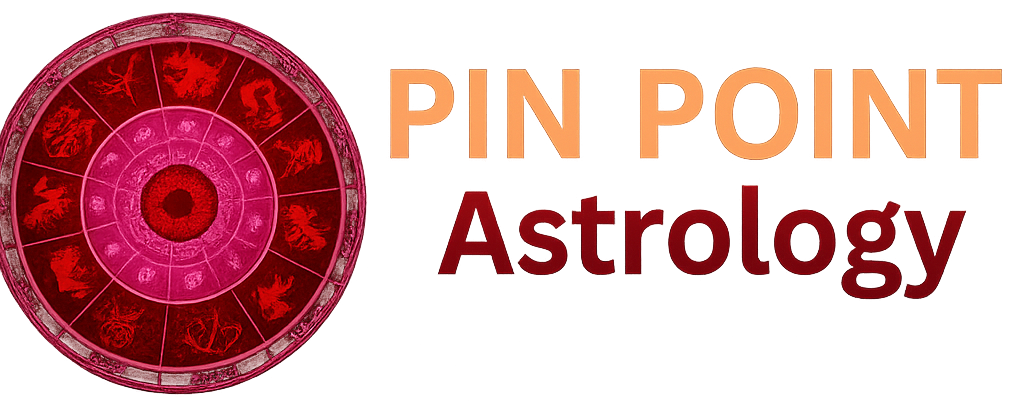In Vedic astrology, the Navamsa chart (D9 chart) holds a special place when it comes to understanding the truth behind a person’s relationships, marriage, and inner potential. While the birth chart (Rashi chart or D1) reveals the blueprint of your life, the Navamsa is like a magnifying glass that uncovers the deeper karmic patterns hidden beneath.
If you are exploring the real strength of your marriage, your partner’s nature, or the destiny of your relationships, you cannot ignore the Navamsa chart. Let’s dive deep into what the Navamsa chart is, why it is so important, and how it reveals the “true face” of marriage in astrology.
What is the Navamsa Chart?
The word Navamsa comes from Sanskrit: Nav (nine) and Amsa (division or part). It is the 9th divisional chart in Vedic astrology, created by dividing each zodiac sign into nine equal parts of 3°20′ each.
While the D1 chart shows your outer life and potential, the D9 chart focuses on your inner strength, spiritual journey, and relationship destiny. It is especially linked to the 9th house matters – dharma (life path), blessings, and fortune – and is considered a blueprint of your soul’s maturity in this lifetime.
Why the Navamsa is Vital for Relationships and Marriage
Many astrologers believe that the Navamsa chart becomes more active after the age of 30 or after marriage, revealing the deeper layers of your destiny. It answers questions like:
- Will your marriage bring happiness or challenges?
- How will your spouse’s true nature be, beyond first impressions?
- Is your partner supportive of your life path and growth?
- Are there karmic lessons in your relationships?
In simple words – the D1 chart may show who you marry, but the D9 chart shows how happy you will be after marriage.
Navamsa and the “True Face” of Marriage
In the early stages of a relationship, we often see only the surface – attraction, shared interests, and outward behavior. But over time, deeper qualities emerge, and the Navamsa chart shows that hidden reality from day one.
Here’s how:
- Strength of the 7th House in Navamsa – This reveals the nature of your spouse and the kind of partnership you will have. A strong 7th house with benefic planets indicates harmony, while malefic influences may bring tests and karmic challenges.
- Placement of the 7th Lord in Navamsa – If the 7th lord from your D1 chart is well-placed in your D9 chart, it shows long-term stability in marriage. If it’s weak or afflicted, it can point to misunderstandings or emotional distance over time.
- Venus and Jupiter in Navamsa – Venus represents love, attraction, and romance, while Jupiter signifies dharma, respect, and blessings. Their strength or weakness here can show how your relationship will sustain after the initial attraction fades.
- Moon in Navamsa – Moon reflects emotional bonding. A strong Moon in the D9 chart indicates emotional comfort and mutual understanding; a weak Moon may lead to emotional dissatisfaction.
How to Read the Navamsa for Marriage Insights
A step-by-step approach for beginners:
Step 1: Check the Ascendant (Lagna) in Navamsa
- A strong Lagna with benefic aspects means you’ll feel empowered after marriage.
- A weak Lagna shows struggles in adjusting to married life.
Step 2: Study the 7th House and Its Lord
- If benefics like Jupiter, Venus, or Mercury influence the 7th house, the marriage tends to be smoother.
- Malefics like Mars, Saturn, Rahu, or Ketu here indicate karmic lessons that require patience.
Step 3: Compare D1 and D9 Charts
- If the same planets are strong in both charts, your relationship path is well-supported.
- If there’s a mismatch, the marriage may feel different than initially expected.
Step 4: Pay Attention to Venus and Jupiter
- Venus rules love and intimacy in male charts; Jupiter rules spouse qualities in female charts.
- Strong placement shows lasting affection and respect.
Step 5: See the Influence of Rahu and Ketu
- These shadow planets often indicate karmic debts from past lives that manifest in marriage.
Common Myths About Navamsa Chart
Myth 1: If your D9 chart is weak, your marriage will fail
Reality – A weak Navamsa does not always mean separation. It may simply indicate that your marriage requires conscious effort and spiritual growth.
Myth 2: Navamsa is only for marriage predictions
Reality – While it is crucial for relationship analysis, it also reveals your spiritual progress, talents, and inner strength.
Myth 3: D9 becomes active only after marriage
Reality – It is always active, but its themes often become more noticeable after significant life changes like marriage or spiritual awakening.
Remedies for Weak Navamsa Indications
If your Navamsa chart shows challenges in relationships, Vedic astrology offers remedies to balance planetary influences:
- Strengthen Benefic Planets – Wear gemstones or perform mantras for Venus, Jupiter, or Moon.
- Charity and Service – Donate to causes linked to afflicted planets (e.g., clothes for Venus, food for Jupiter).
- Fasting and Spiritual Practices – Follow planetary fasts and meditate regularly to build emotional balance.
- Improve Communication Skills – Many relationship challenges are solved through patience and understanding.
Final Thoughts
The Navamsa chart is not about predicting doom or perfection. It is a spiritual map showing how your relationships will evolve with time. While the birth chart tells you the “who” and “when” of marriage, the Navamsa reveals the “how it will feel in the long run.”
By studying your D9 chart, you gain the power to understand hidden truths, prepare for challenges, and nurture the blessings in your marriage.
Astrology, especially when it comes to relationships, is less about fate and more about awareness. The Navamsa chart offers that awareness – a mirror that reflects not just your spouse’s true nature, but also your own growth in love and partnership.

